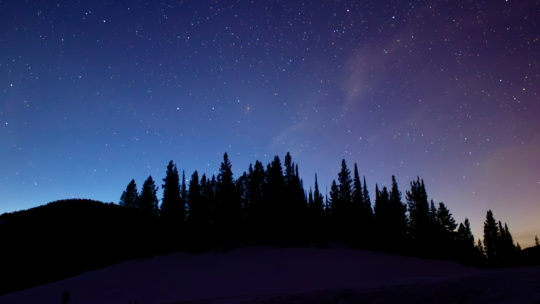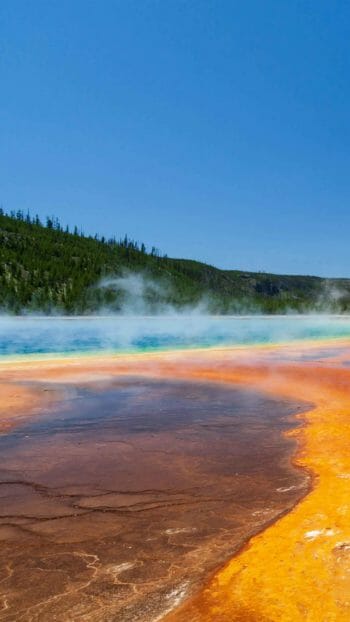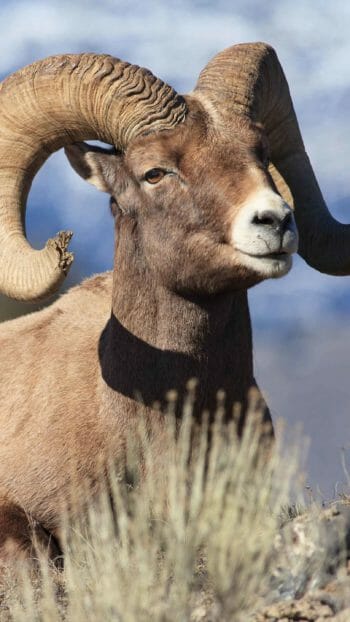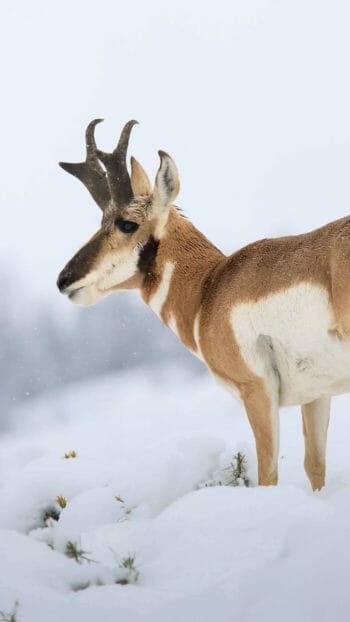Search
Special Interest Tours
Stargazing Tours
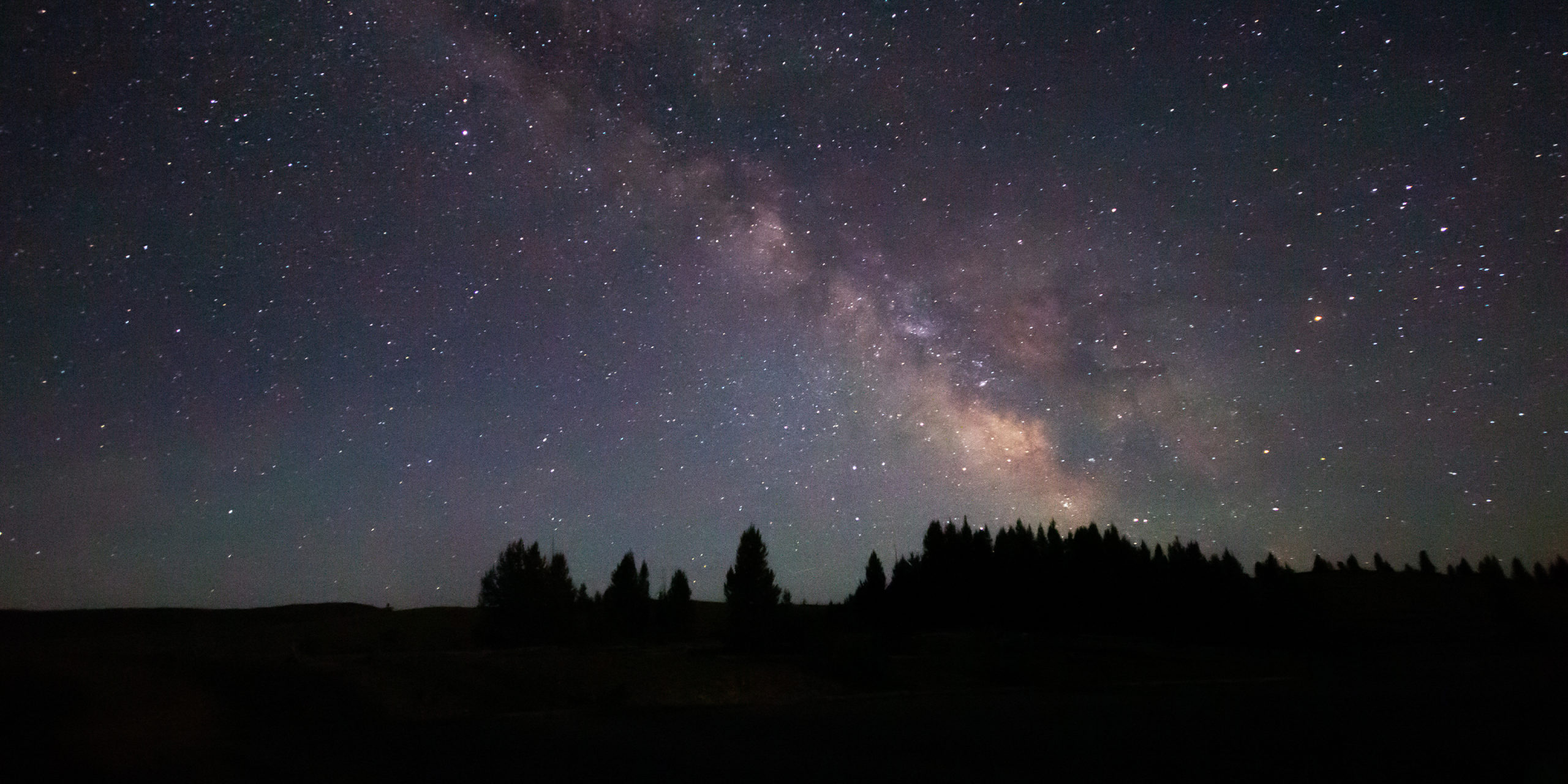
Stargazing in the Greater Yellowstone Ecosystem (GYE) is a breathtaking, one-of-a-kind experience for folks of all ages. Free from light pollution and nestled at high elevations, conditions in the GYE allow for the world above our heads to look crystal clear and just as dark as ancient peoples would have seen.
As the sun sets on the stunning landscape surrounding you, the sky springs to life; stars, planets, and far away nebulae and galaxies twinkle above your head. There is so much to see, from glimmering stars to planets like Jupiter and Saturn keeping bright, steady watch over the Earth. Satellites whizz across the sky, some dim and others so bright they look like stars themselves, reminding us of our impact in space. If you’re lucky, perhaps a shooting star will streak across the sky, the perfect chance to make a wish. In the summer, the Milky Way shines intensely bright as the core of the galaxy faces the Earth during the short but stunning summer nights.
A whole other world hides even deeper within the cosmos. Using a high-powered computerized telescope, you can peer beyond the confines of our eyes to see glittering star clusters and swirling, dusty galaxies. In the spring, the Orion Nebula springs to life, showcasing the dust and gas of a stellar nursery where new stars are born every day. In the summer, the star Albireo reveals itself as a double star, with a blue and orange component only visible through a telescope. Fall brings the massive Andromeda galaxy, our closest galactic neighbor, magnified to show spiral detail. Winter’s long, cold nights allow for optimal astronomical seeing, and those brave enough to face the cold are rewarded with views of the Pleiades and the gas giants, Jupiter and Saturn.
Star Stories
Set against the inky black skies of the Greater Yellowstone Ecosystem, the stars dance in our eyes. These celestial bodies show the stories and traditions of countless cultures: in one star cluster, the Greeks saw the Pleiades, the seven daughters of Atlas and Pleione. Centuries later and an ocean away, the Blackfoot people saw the Lost Children, a group of brothers who escaped to the sky after failing to get yellow buffalo calf pelts from their parents. As we look to the stars, we recall these foundational stories and witness the power of these dark skies.
The Milky Way
During summer nights Earth faces toward the galactic core of our own Milky Way galaxy. During this time the galaxy is at its brightest, streaking across the night sky and glittering with billions of stars just like our sun. In the Greater Yellowstone Ecosystem you can experience the Milky Way with just your eyes; in these dark, remote skies, the invisible becomes visible and we can reflect on our place in space as one of many stars in this vast galaxy teeming with solar systems.
Planets
Throughout the year the planets in our solar system are visible at different times. When they are visible, the planets can shine even brighter than the stars, especially the gas giants Jupiter and Saturn. With a high-powered telescope, you can see features on these alien worlds, including storm bands on Jupiter, the great rings of Saturn, and the rusty red color of Mars. No matter what the planet, the experience of viewing it through a telescope is one that cannot be missed!
Deep Sky Objects
With a high-powered telescope, your view of outer space stretches even deeper into the depth of the cosmos. Through the telescope we can see wonders invisible to the naked eye such as dusty galaxies, colorful nebulae, and glimmering star clusters. Throughout the year different objects can be seen as Earth moves through its orbit around the sun; each season brings with it a unique view of the heavens.
Every season brings with it its own unique advantages to stargazing and telescope viewing. Be sure to check ahead of time to know a bit more about what to expect on your tour depending on the time of year!
Spring/Summer
From May through October, we offer half-day stargazing tours as well as full day wildlife safari and stargazing combination tours. During your stargazing tour, you can expect to see the best of what stargazing in the Greater Yellowstone Ecosystem has to offer; galaxies like Bode’s Galaxy and the Whirlpool Galaxy offer a view into another world, while views of our own Milky Way galaxy get better as the season progresses. The double star Albireo shines with two distinct colors, orange and blue, visible only through a telescope and appearing white to the naked eye. Nebulae like the Eagle Nebulae and Ring Nebula provide insight into the colorful world of star formation and star death, interpreted expertly by the astronomer leading your tour. No matter when you book your tour, the world above our heads is teeming with mysterious and beautiful objects just waiting to be revealed.
Our tours are flexible, so you can focus on what interests you the most. Whether you like learning about astrophysics, watching for shooting stars, or peering through the telescope, we can customize the experience for you. Your tour is designed to be all about what you enjoy the most!
FAQs
What makes Yellowstone one of the best places for stargazing?
Yellowstone offers minimal light pollution, high elevations, and vast open spaces, ideal for seeing stars, planets, Milky Way, and even the occasional aurora.
When is the best time to go on a stargazing tour in Yellowstone?
For Milky Way viewing, go in June–August; fall brings crisp skies and meteor showers like the Orionids; winter offers long nights and possible northern lights; spring offers clear nights and fewer crowds.
How should I prepare for a Yellowstone stargazing night?
- Check weather and moon phase—aim for a New Moon.
- Dress in layers (warm coat, hat, gloves).
- Pack: red flashlight, binoculars, blankets, snacks (all provided by Yellowstone Safari Company).
- Bring a camera with tripod if you’re into astrophotography.
Can families with kids join the stargazing tour?
Yes! Tours are family-friendly with telescopes, interactive stories, and safe viewing instruction provided by your professional astronomy guide.
What happens if the weather is cloudy or stormy?
Guides monitor conditions and may reschedule or refund if needed. They may also move the tour to clearer alternate sites, depending on the conditions that day. Your guide will be in touch with you prior to departure to go over your options.
How is a guided tour better than stargazing on my own?
Guides bring expertise, telescopes, and know the best locations—plus they ensure safety from wildlife, handle logistics, and enhance storytelling. Whether you are a professional astronomer, a hobbyist, or this is your first time gazing at the cosmos, a professional guide can enhance your stargazing experience by providing a sense of place, and educational content relevant to your experience.


